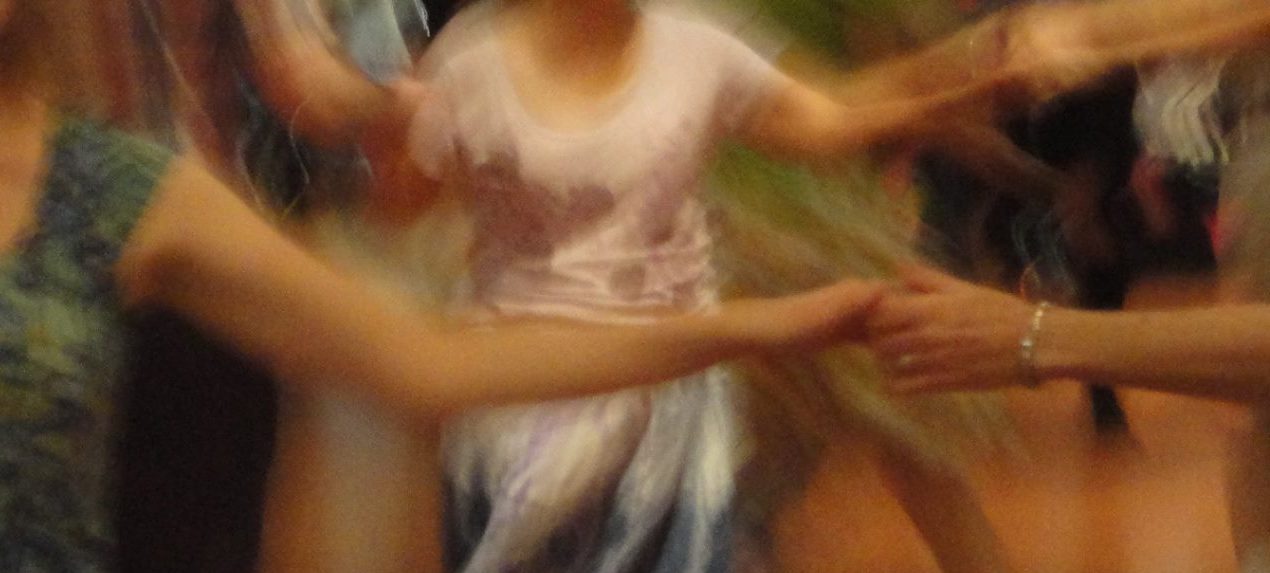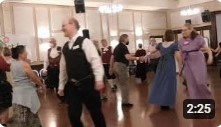What is English country dance?
Before there was contra dance, there was English country dance. Jane Austen did it. George Washington did it. So can you!

Fun to dance, easy to learn. English country dance is a direct ancestor of contra dance and, like contra dance, involves repeated series of moves by which you and your partner interact with each other and a succession of other dancers in time to the music. However, English country dance offers much greater variety in musical styles, dance formations and time signatures.
In modern English country dance, the principal step is the walking step. All dances are taught by a caller, who walks the dancers through the dance, then prompts as they dance.
Beautiful music. One of the many joys of English country dance is the beauty and variety of the music. Each dance has its own very different tune and mood.
No need to bring a partner. While most dances require a partner, it is traditional to change partners, and it is even considered rude to always dance with the same person. Anyone can ask anyone to dance, in either role, and we do our best to make sure that everyone gets to dance as often as they want.
No special attire required. Just wear lightweight clothing and comfortable shoes that won’t stick or slide on the dance floor.
Like to dress up? We hold balls from time to time at which period and other fancy dress is very much admired, although not required. See the events calendar on the Events page for the next scheduled ball. Note: Teaching at balls is minimal. If you’d like to attend one, dance with us at our regular dance first so you know the basic figures.
Weekly dance
See the Events page for information about our weekly Monday evening dance and the next scheduled Monday evening ball or live music event.
Set for Spring
Set for Spring is an English country dance weekend that rotates between cities in Texas and Oklahoma.
Here are some videos from the last Set for Spring in Austin. March 29-31, 2024.
Video credit: Sean Irvin
For information on the most recent or next weekend event, go to SetForSpring.org
A brief history of English country dance
English country dance was once the primary form of social dancing in England and the English-speaking world. It appears to have arisen in the 16th century during the reign of Queen Elizabeth I as an amalgam of English folk dancing and dances from the courts of Europe (primarily Italy). In the 17th century, it spread from the English court to the upper classes, and during the 18th century, it was adopted by the new middle classes throughout England and the colonies. It was also danced in the courts of Europe, and French refinements were later reimported to the British Isles and the British colonies. However, in the early 19th century, couple dances eclipsed country dancing, which survived only in its descendants: English village dances, Scottish and Irish country dancing, and American contra dancing. Nevertheless, a late 19th century interest in folk traditions led to its revival in a simplified form without complicated footwork. Although it has never regained its earlier prominence, English country dancing remains very much alive, and new dances and dance tunes are still being composed.
For a not-so-brief history, see PureHistory’s page on English Country Dance or the this lecture from the video archives of the Library of Congress.


